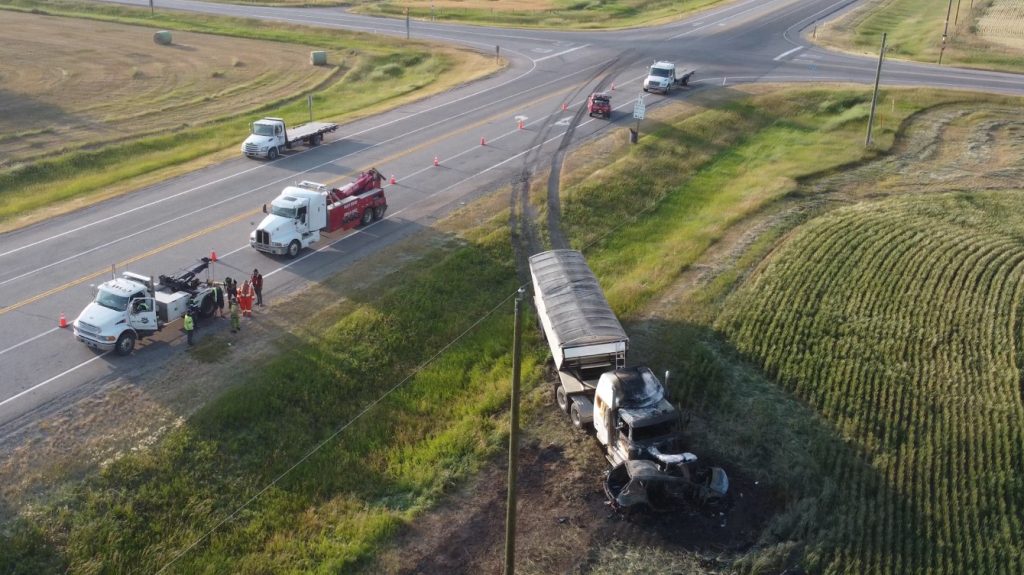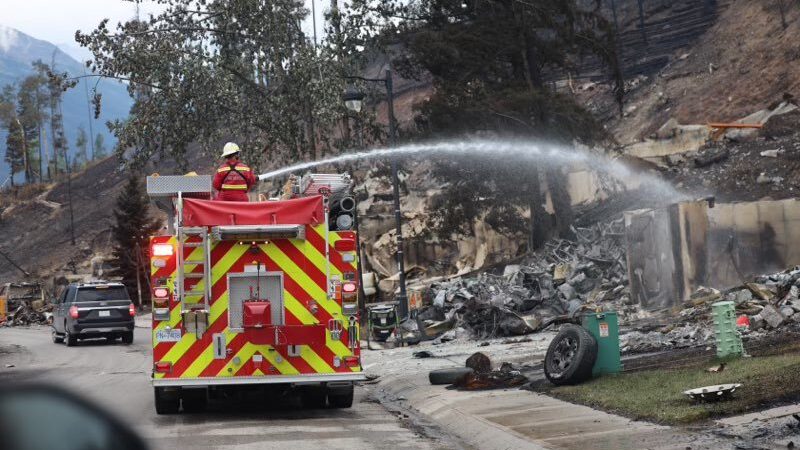Canadian farmers hoping for better season as wheat prices soar amid Russia-Ukraine war
Posted Mar 10, 2022 12:47 pm.
Last Updated Mar 10, 2022 3:50 pm.
The price of just about everything continues to rise around the world, and wheat is another commodity seeing a soaring price tag following the outbreak of war between Ukraine and Russia.
There is pressure on the world supply of wheat, but there’s a possible benefit to Canadian farmers because higher prices could create more profits. However, profits may get cancelled out as farmers experience higher costs of their own and an uncertain future.
“We need some rain and we need some crops in 2022 otherwise, I hate to say it, but there could be food shortages coming,” said Stephen Vandervalk with Western Canadian Wheat Growers.
Vandervalk has a farm south of Calgary and said last year was disastrous for crops due to a severe drought.
“The world for sure can’t handle another 2021, especially if Ukraine and Russia are out of the picture,” he said.
Those countries were crucial in the world market, and it is likely that many farms would start to get seeded pretty soon in those areas and if war is disrupting operations then it will be hard to meet the demand in countries that need it.
Read more: Russian war in world’s ‘breadbasket’ threatens food supply
“It’s not such a big factor for North America because we’re exporters, but places like the middle east like especially Egypt, they get all their wheat almost from Ukraine and Russia,” he said. “They actually had contracts to get wheat delivered now, old crop wheat not new crop, and I don’t think they can get delivered now. So, they’re scrambling to find supplies which there isn’t any, and that’s why you’re seeing these price spikes.”
While it would be ideal if Canada could meet all the demand, the prospect of another dry year like we saw in 2021 combined with increased costs across the board means we all could still feel the pinch.
“Fertilizer has tripled in price, if you can even get it, and so people are going to probably be cutting back or if you just can’t get it you can’t put it in, and that could mean yield reductions.”
Vandervalk said farmers are also experiencing the increase in taxes and fuel prices, and if there is an increase in the cost of products down the line this year he wants to make it clear that farmers are not pocketing the extra cash.
“My estimation is this will be the most expensive crop we’ve ever put in the ground,” said Greg Sears, board chair of the Alberta Wheat Commission.
Sears said overall, they have seen increases between 50 and 100 per cent for the cost of materials and this fits into the wider picture of why there might be higher costs on farmers, and then down to the consumer as well.
“We’re seeing the compounding right now of high demand for food products, combined with the high costs of the supply chain — be it for transportation, for processing, for labour — all the things that go into making that loaf of bread that the consumer sees at the grocery store.”
Vandervalk said they are about four weeks away from seeding crops, and in the meantime, he is getting shipments in to get ready for the season, and there is some time for other farmers to consider adjusting their crops in order to grow more wheat or other products that will be in higher demand.
But again, going into the year Sears said they have moisture deficiencies to deal with and the ongoing problems with the supply chain so for the moment they all have their fingers crossed and hoping for better conditions, as well as a reduction in global tensions.
“You might call it a black swan event that is totally unforeseen and frankly it is totally unpredictable,” he said. “Wheat is one of those crops that is grown pretty much around the world, it’s a staple, and I think that with normal weather around the world it won’t take too long for the world supplies to get back to normal.”








